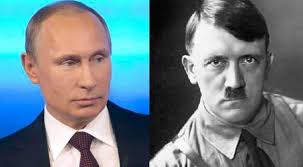A few weeks ago Russia indicated that it might designate Facebook as an extremist organisation. To block such a thing occurring, Facebook’s parent company, Meta, clarified its position. It had recently changed its rules to allow Ukrainians to vent their anger against the Russian military. But as Nick Clegg, Meta’s President of Global Affairs, said, Facebook does “not permit calls to assassinate a head of state.” Facebook’s army of censors will remove all references to the desirability of Putin being killed.
It was not always thus. In June 1944, not long after the invasion of Normandy, the Special Operations Executive (SOE) was ordered to plan an assassination attempt on Hitler. The result of their effort was a 120 page report, full of maps, illustrations and photographs, laying out some ways that Britain’s number one enemy could be taken out.
While there was extensive discussion at the highest levels of SOE about whether killing Hitler was desirable — some thought it might lengthen the war –there was no discussion about whether it was legal or moral.
By this point in the Second World War, targeted killings of enemy commanders and political leaders had already taken place. SOE itself was implicated in (though it did not actually carry out) the assassination of Reinhard Heydrich in Prague in 1942. Earlier, the British had attempted a commando raid to capture or kill Erwin Rommel, the commander of German forces in North Africa. The Americans too engaged in similar operations, most famously the 1943 shooting down of a Japanese warplane carrying the architect of the attack on Pearl Harbor, Admiral Isoroku Yamamoto.
The SOE officers who prepared what became known as “Operation FOXLEY” came up with a number of scenarios. Some were realistic, such as having a sniper shoot Hitler on his morning walk in Berchtesgaden. Others were bonkers — such as hypnotising Rudolf Hess and returning him to Germany to kill Nazi leaders. Various poisons were discussed that could be used in either the Führer’s drinking water or his non-alcoholic beer. The one that was chosen was later made famous by Agatha Christie in one of her novels.
The Americans and Soviets too had their own plans to assassinate the Nazi leader. One of the American plans involved bribing the man in charge of Hitler’s vegetable garden to inject female hormones into the Führer’s carrots and beets. This would not have killed the Nazi leader, but the Americans believed it might cause his moustache to fall out and his voice to become high-pitched.
As the war moved towards it conclusion, none of the SOE plans were carried out. Hitler was allowed to live until 30 April 1945 when he shot himself in his Berlin bunker.
Looking back at Operation FOXLEY today, we remember a time when the world was at war, and enemy leaders were considered legitimate targets.
Whether similar plans are being drawn up today in London or Washington we cannot know.
But at least Putin can rest safe in the knowledge that no contemporary version of Operation FOXLEY is going to be published on Facebook.
